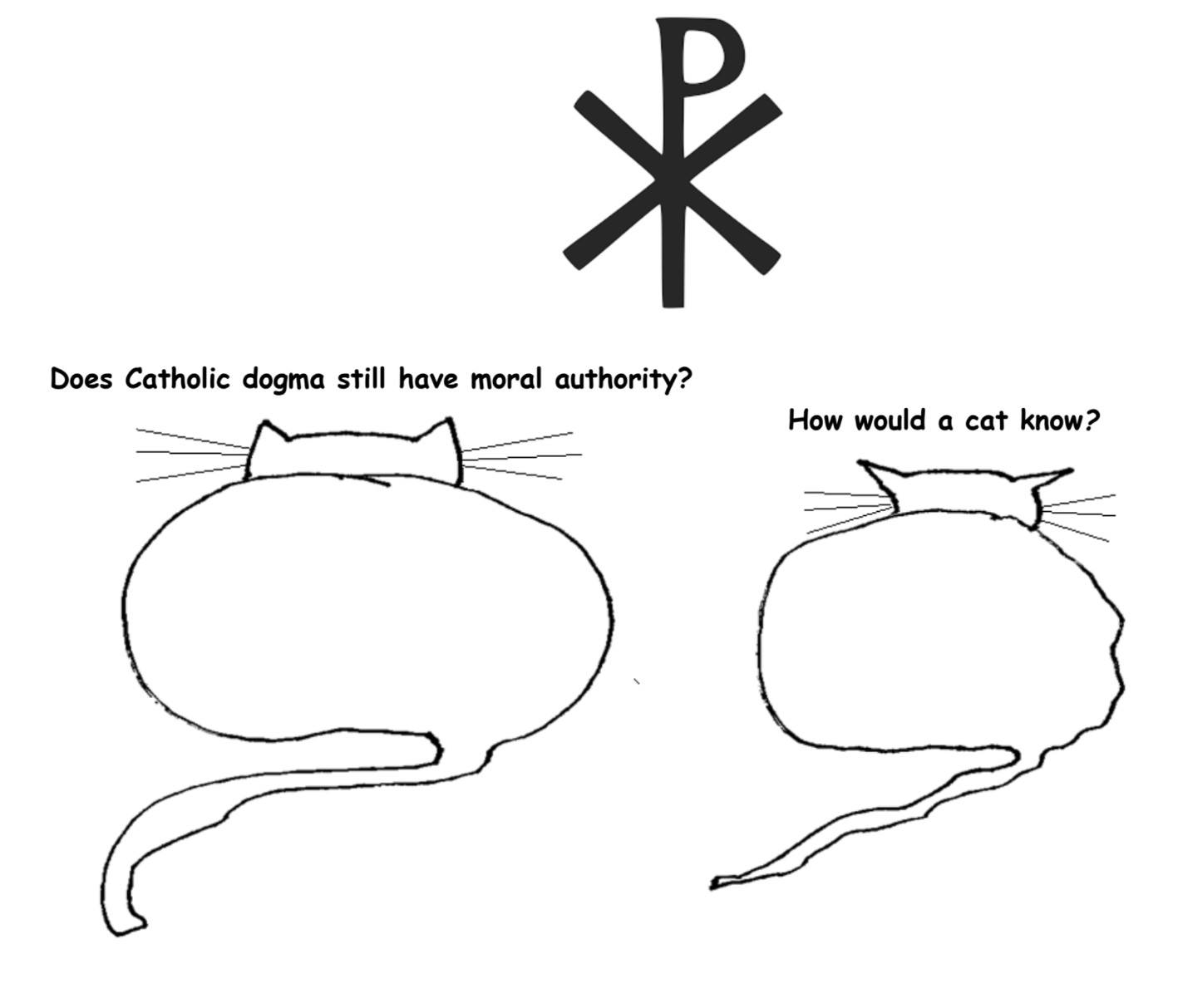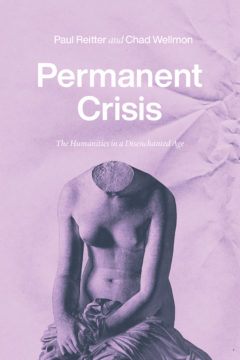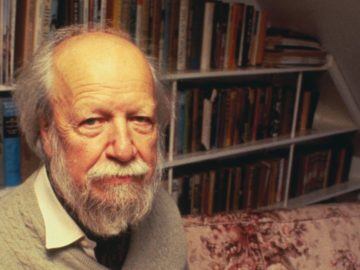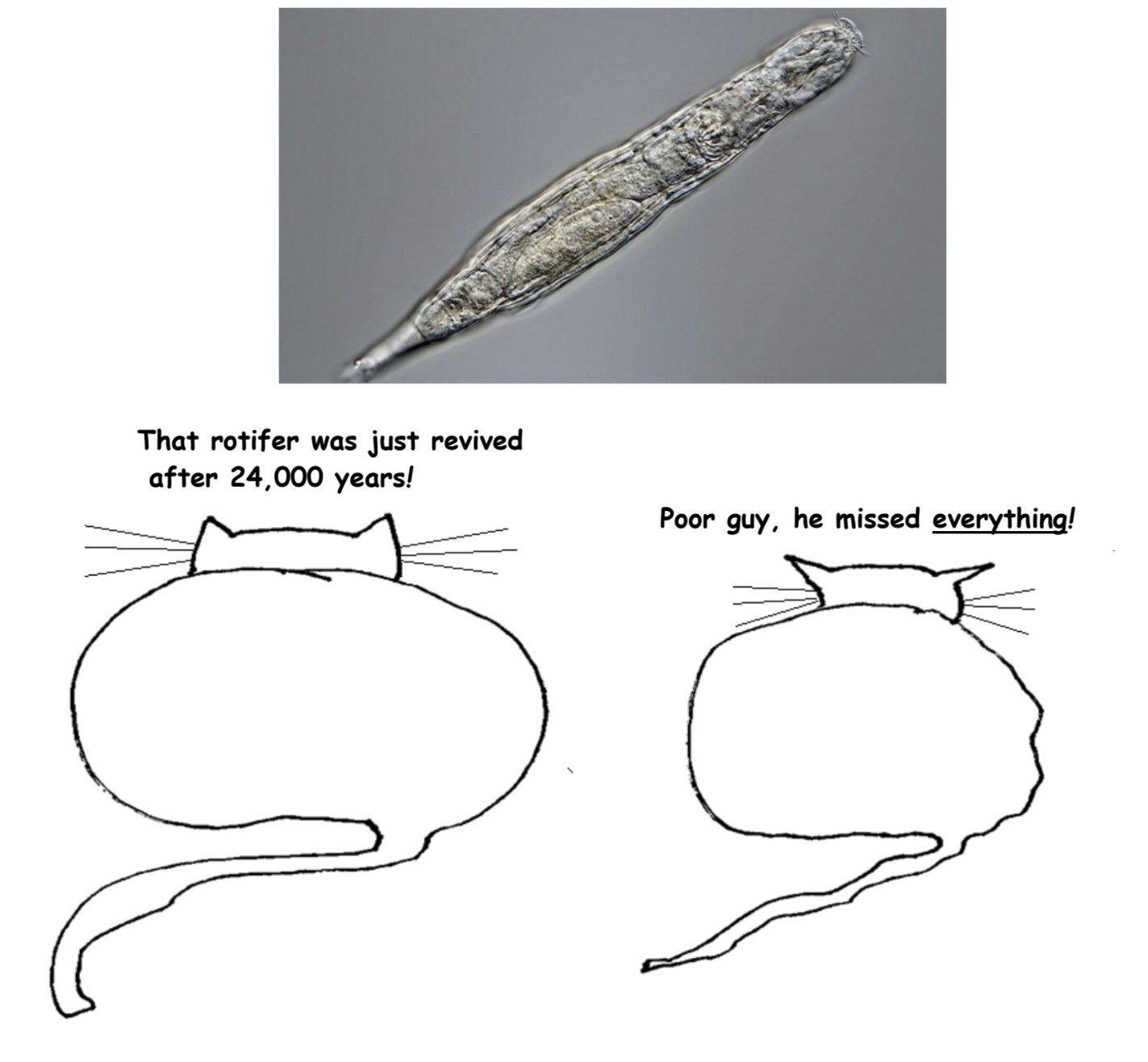by Brooks Riley

by Brooks Riley

by Sarah Firisen
 When we were young, most of us indulged in the speculation, “What do I want to be when I grow up?” Many of us said things like a firefighter, a doctor, a nurse, or a teacher. As children, we instinctively looked at the world around us and recognized the careers that seemed to have purpose and meaning, and that seemed to make the world a better place. I can’t imagine that many 5-years olds dreamed of being paper pushers or spending their days doing data entry. But we grow up. People around us have expectations for us; we have expectations for ourselves. We might have academic challenges, financial needs, family obligations. We see the world and the careers open to us as more diverse and as more challenging than the Fisher-Price Little People figures that characterize the world for a child. And so, many of us lose that childhood idealism and just get a job, get on the career ladder, put our noses to the grindstone.
When we were young, most of us indulged in the speculation, “What do I want to be when I grow up?” Many of us said things like a firefighter, a doctor, a nurse, or a teacher. As children, we instinctively looked at the world around us and recognized the careers that seemed to have purpose and meaning, and that seemed to make the world a better place. I can’t imagine that many 5-years olds dreamed of being paper pushers or spending their days doing data entry. But we grow up. People around us have expectations for us; we have expectations for ourselves. We might have academic challenges, financial needs, family obligations. We see the world and the careers open to us as more diverse and as more challenging than the Fisher-Price Little People figures that characterize the world for a child. And so, many of us lose that childhood idealism and just get a job, get on the career ladder, put our noses to the grindstone.
At the beginning of lockdown, my friend and former colleague Catherine and I started talking about the future of work. This conversation turned into a book that we’re currently writing, and a companion podcast called The Impromptu Game Plan. Our overall premise was, “for the last decade, the digitization of jobs, primarily through automation, has been an exponentially disruptive force. And then COVID-19 hit. COVID-19 has devastated entire industries that may never come back, or at least come back in their previous form. It further disrupted the world, the economy, the workforce in ways that we will be living with long beyond the end of the spread of the virus. The economic disruption caused by lockdown has accelerated the workforce displacement already underway due to automation and other technology disruptions. We’re now living through a perfect storm of human-made and natural disruption that will cause as much reordering in society as the industrial revolution did, perhaps more so.” We thought there was an interesting germ of an idea there, but we had no idea how prescient we would turn out to be. Read more »
by Callum Watts
 The desire to turn failure into a learning opportunity is often generous, and an important way of dealing with the trials and tribulations of life. I first became aware of it as a frequent trope in start-up culture, where, influenced by practices in software development where trying things out and failing is the quickest way to get to something of value, we are constantly subject to exhortations to “fail fast and fail forward”. Many workplaces now lionise (whether sincerely or not is another matter) the importance of learning through failure, and of creating environments that encourage this.
The desire to turn failure into a learning opportunity is often generous, and an important way of dealing with the trials and tribulations of life. I first became aware of it as a frequent trope in start-up culture, where, influenced by practices in software development where trying things out and failing is the quickest way to get to something of value, we are constantly subject to exhortations to “fail fast and fail forward”. Many workplaces now lionise (whether sincerely or not is another matter) the importance of learning through failure, and of creating environments that encourage this.
I’ve noticed the idea that failure should be re-conceptualised primarily as a source of learning appearing in many other contexts. Self-help encourages us to think of misfortunes as opportunities for personal development. The peculiar fact that people like Jordan Belfort have become popular figures in the self-help/motivational speaker circuit is striking, but even outside the realm of obvious moral failings, we are encouraged to think of our own tragedies as opportunities for redemption and growth. In the face of covid-19, people talk about what they have learnt from a year in lockdown, how it might have improved them as, and I expect there will be plenty more of this sort of thinking to come in the next couple of years. This though, can become a manic compulsion, which has a distorting effect on our ability to understand the reality of our existential condition. The desire to find in every grief an opportunity, forgets the inescapably tragic dimension of life, and in doing so misses something profound. Read more »
by Bill Murray
 If you’d like to start at the beginning, read Part One here.
If you’d like to start at the beginning, read Part One here.
On a piercing-bright, dripping-humid Irrawaddy delta morning in the 1990s, wild, screeching fowl wheeled over trucks full of boys in Chinese dragonheads banging on the side panels, driving in circles, celebrating the new year. The year of the pig had just begun.
The Yangon – Thalyin bridge was three two-and-a-half kilometer, Chinese-built lanes, one in each direction with a rail track separating them in the middle. Having just one lane on a bridge doesn’t keep anybody from passing, of course.
From China all the way around southeast Asia to here, the technique for driving is the same: If you get out around the car in front of you fast enough, you present the oncoming drivers with a fait accompli: I am tying up the entire highway in front of you, so you have no choice but to brake and let me merge in front of the guy beside me.
Naturally the oncoming traffic plots to do the same, and tranquility seldom reigns. Yet in the middle of it all, whole Burmese families plodded by on ox carts or old blue Ford or Dodge “buscars” with men and boys stuffed everywhere inside, standing hanging on the back and a dozen more piled on top. Invariably they all broke into wide smiles and waved madly as they wheezed past. Read more »
Paul Reitter and Chad Wellmon, Permanent Crisis: The Humanities in a Disenchanted Age, The University of Chicago Press, 2021.

Permanent Crisis hits close to home. In the first place, I have been trained as a humanist, my degree is in English Literature. But I have long suspected that the sense humanists have of being under attack (by agencies in the culture at large) is at least as much a feature of humanities culture as it is a perception of the world in which they live. Thus I am biased in favor of the thesis Reitter and Wellmon are arguing.
Second, most of the book is an examination of debates that took place within the German academy in the nineteenth century. Why is that important to me? Because my alma mater, Johns Hopkins University, was explicitly founded on the German model in 1876, the first American university to be so founded. The words Bildung and Wissenschaft that march through this text like Sherman’s troops through Georgia also surrounded me at Hopkins.
But first I urge you to settle into a comfortable chair, pour yourself a drink, coffee, tea, scotch, a white wine spritzer, whatever. This is going to take awhile. As you know, it is customary in some quarters for a reviewer to use the occasion to expatiate on their own views while treating the book under review as but a pendant on that disquisition. I hope, Paul and Chad, that my abuse of this privilege is not so flagrant as is so often the case in, for example, The New York Review of Books but I found your argument so compelling that I had to toss in my 2 cents.
In the first section I lay out their argument as I understand it. Then, after a generous quotation from the book, I illustrate the argument with some observations by the late J. Hillis Miller, a contemporary humanist of the first rank. Miller’s observations set up the third section, where I stray from the text entirely, and discuss the ways in which schools could use the internet to revamp humanities instruction and public outreach in ways suitable to the contemporary world. I loose it entirely in the fourth section, where I explain how one ancient text, Plato’s The Crito, has been central to my own life, and then move closer to the Reiter’s and Wellmon’s text with a discussion of Goethe’s Faust, which also has personal significance. I conclude on a note of measured open-ended pessimism. Read more »
by Ashutosh Jogalekar
 ‘Areopagitica‘ was a famous speech delivered by the poet John Milton in the English Parliament in 1644, arguing for the unlicensed printing of books. It is one of the most famous speeches in favor of freedom of expression. Milton was arguing against a parliamentary ordinance requiring authors to get a license for their works before they could be published. Delivered during the height of the English Civil War, Milton was well aware of the power of words to inspire as well as incite. He said,
‘Areopagitica‘ was a famous speech delivered by the poet John Milton in the English Parliament in 1644, arguing for the unlicensed printing of books. It is one of the most famous speeches in favor of freedom of expression. Milton was arguing against a parliamentary ordinance requiring authors to get a license for their works before they could be published. Delivered during the height of the English Civil War, Milton was well aware of the power of words to inspire as well as incite. He said,
For books are not absolutely dead things, but do preserve as in a vial the purest efficacy and extraction of that living intellect that bred them. I know they are as lively, and as vigorously productive, as those fabulous Dragon’s teeth; and being sown up and down, may chance to spring up armed men…
What Milton was saying is not that books and words can never incite, but that it would be folly to restrict or ban them before they have been published. This appeal toward withholding restraint before publication found its way into the United States Constitution and has been a pillar of freedom of expression and the press since.
Why was Milton opposed to pre-publication restrictions on books? Not just because he realized that it was a matter of personal liberty, but because he realized that restricting a book’s contents means restricting the very power of the human mind to come up with new ideas. He powerfully reminded Parliament,
Who kills a man kills a reasonable creature, God’s image; but he who destroys a good book, kills reason itself, kills the image of God, as it were, in the eye. Many a man lives a burden to the earth; but a good book is the precious lifeblood of a master spirit, embalmed and treasured up on purpose to a life beyond life.
Milton saw quite clearly that the problem with limiting publication is in significant part a problem with trying to figure out all the places a book can go. The same problem arises with science. Read more »
.
3:40 am in chair
I’m at my sister’s house
(like home)
swaddled wee-hour early, in an Afghan
in a chair (me being
at an age that easily chills)
a codger reading poems of trees
sent by a friend
thoughts of climbing them unbidden come:
young
(youth well spent)
amid limbs bent toward light
I regard what can be seen from (t)here
see
….what has unfolded
….…what unfolds
……… what will unfold
….…….. my nephew was
a young man in a tree
an articulating Aspen whose leaves flicked in wind
feverishly
who could not live what he
could not see
I think of
hymn
.
Jim Culleny
6/13/20
by Jonathan Kujawa
 In my last essay for 3QD we talked about how we are at the beginning of a new era in mathematics. As a discipline mathematics has the mythos that it is True and Eternal, but it is also a human endeavor and has its share of errors. Fortunately, it is a robust and self-correcting system that usually catches and corrects these errors.
In my last essay for 3QD we talked about how we are at the beginning of a new era in mathematics. As a discipline mathematics has the mythos that it is True and Eternal, but it is also a human endeavor and has its share of errors. Fortunately, it is a robust and self-correcting system that usually catches and corrects these errors.
For several decades we have had proof verification software. Versions of such software are useful in the so-called “real world”. NASA, for example, is keen to avoid software crashes. After all, if you brick the Curiosity rover on the surface of Mars it’s not like you can just reboot it. NASA sponsors an ongoing series of meetings devoted to formal verification methods.
In mathematics, however, proof verification software has yet to play an important role. For both human and technical reasons, research mathematicians and proof verification folks live on different planets. My last essay was about the software package Lean and the fact it is quickly getting up to speed with undergraduate level mathematics and even knows about manifolds and perfectoid spaces (geometric objects used by researchers every day). Heck, perfectoid spaces were introduced by Peter Scholze less than a decade ago — a blink of an eye in the long arc of mathematics.
In fortuitous timing for 3QD readers, Lean made news just last week. In December Peter Scholze laid down a challenge to the Lean community. It was called the Liquid Tensor Experiment. Last week the challenge was answered.
The revolution has begun! Read more »
by Tim Sommers

In an interesting recent article on Aeon, “You are a Network” (based on her 2019 book, “The Network Self”), Kathleen Wallace argues that anthropological, narrative, feminist, and communitarian views of the self have all converged on the idea that you are a network.
But you’re not.
At least part of what she has in mind is that the self is a process not a substance, that it’s essentially relational, and that it can be extended in various ways – for example, what we count as our cognition can be extended beyond the boundaries of our own mind and body. It’s a neat idea, but I don’t think it’s true.
The argument that “you are a process” is orthogonal to the question of what sort of thing or process you are. For example, physicalists (philosophers committed to what used to be called “the slogan”: “everything that is real is physical”) prototypically also describe the self as a process. It’s a brain process. So, I don’t think the substance/process bit is the real issue.
So, I want to talk about whether you and I are essentially relational and whether our cognition can be extended or networked. With all due respect to the view, my aim is deflationary. There are relational properties, but you cannot essentially be your relational properties. And that idea that we can extend our cognition is basically just a metaphor. Let’s start there. Read more »
 Jean Shin. Fallen. Installation at Olana State Historic Site, New York.
Jean Shin. Fallen. Installation at Olana State Historic Site, New York.
“… In the 19th century, hundreds of thousands of hemlocks were cut down for the tanning industry, which used the tannin in the tree’s bark for the commercial demands of leather-making. The devastating loss of these evergreen forests would have been visible from Olana’s hilltop. With an artist’s eye toward the cycles of nature, Church would also include fallen trees in his paintings.”
“In memory of the millions of hemlocks that fell in the 19th century to the local leather-tanning industry, Jean Shin used antique bark-peeling tools to remove the tree’s outer layer before giving it a protective new coat …”
by Chris Horner

Where all are guilty, no one is; confessions of collective guilt are the best possible safeguard against the discovery of culprits, and the very magnitude of the crime the best excuse for doing nothing. – Hannah Arendt.
The quotation from Arendt is often thought to apply to the aftermath of the events of 1939-45, of the Nazi atrocities, especially, of course, the Holocaust. In fact, although it is fair to say it was considerations of that sort that prompted her into thinking about guilt and responsibility, she was very aware of the problematic nature of claims of collective guilt in the post war era. The question is about culpability: the way we ought to think about guilt. She rejected the idea that there is a kind of collective guilt, say of a whole nation (in 1945 the German people, and presumably their helpers in the occupied countries, of whom there were too many). We can widen the question to include Allied war crimes, which generally went unpunished. And of course, pressingly, we turn our gaze to our world and its burden of historical and ongoing crime and oppression.
Arendt rejected collective guilt in part because it tends to blur the difference between the specific actions for which actors need to be held to account, and the vague sense that guilt is shared. Guilt here is being seen in two senses: in the legal sense (X is guilty of a crime) and the feeling of guilt (X feels guilty). Arendt wants to separate them, partly to keep the sense that some are the actors who need to be held to account for actions but also for another important reason, which links to her more general concerns about the difference between politics and morality.
We need to distinguish between two concepts that are often associated: guilt and responsibility. The two concepts do go together, of course. We hold a person guilty of a crime if we regard them as responsible for committing it: that is why we don’t treat the mentally unfit in the same way we do people who know what they are doing is wrong. This applies to the minor and trivial as well as the unspeakably terrible. So Bob steals a bike and he is guilty of it, because he did it, knowingly. And Adolf Eichmann is guilty because he knowingly took part in the Holocaust – he is responsible for what he did. If I did neither of these things, then I am not responsible in this sense and not guilty. But can I be responsible for things I did not do? Read more »
by Peter Wells

Seventy years ago, according to William Golding: The Man Who Wrote Lord of the Flies (Carey, 2009), the future Nobel prizewinner was a middle-aged English teacher in a private boys’ school in Salisbury, UK, and not enjoying it. He had written three novels, none of them published, though some of his poems had gone into print. His novel about schoolboys killing each other on a tropical island, originally entitled Strangers From Within, was begun in 1951 and first sent to a publisher in 1952. It was rejected by seven publishers before Golding sent it to Faber & Faber in 1953, where the reader, Polly Perkins, pronounced it:
An absurd and uninteresting fantasy about the explosion of an atomic bomb on the colonies and a group of children who land in the jungle near New Guinea. Rubbish and dull. Pointless.
Golding might have continued for a further twenty years in the job he hated, had not a new member of the Faber & Faber team, Charles Monteith, picked up the well-thumbed manuscript from the reject pile and taken it home. Should we be grateful to him? Read more »
by Brooks Riley

by Varun Gauri

The narrator and main character of Ishiguro’s new novel is Klara, an Artificial Friend (AF, for short). In other words, she’s an artificial intelligence, a robot, a machine. Klara’s job is to befriend and care for a sick young teenager, Josie.
Why would Josie, or any human being, want to befriend an artificial intelligence?
To being with, Klara is “really cute.” Her hair is “neat and short.” Not only does she resemble a human, Josie observes, but Klara looks French! Klara is also “really smart.” She has “many unique qualities,” perhaps foremost “an appetite for observing and learning,” unlike many of the other AFs, especially the ones that have all the latest technical advances but which people don’t seem to take to. For these reasons, Josie instinctively picks out Klara at the AF store.
Klara’s descriptions of human life are direct and novel. The reader notices her language, which, as James Wood observes, powerfully makes the real truly strange, defamiliarizing, and thereby renewing, our perceptions of the world. For instance, she repeatedly acknowledges the sun not for its warmth or the lovely shadows it casts, as a human narrator might, but for the sun’s “patterns” and its “nourishment,” as a a solar-powered machine would, one imagines. Her accounts of human emotions are alternately astute and bizarrely precise: “My impression was that the Mother was at that moment the most lacking in tension I’d witnessed since my arrival.” Klara is especially attuned to the ways in which loneliness creeps into human life, and says this about the importance of Josie joining her mother for morning coffee before the mother leaves for work: “I understood then that if she failed to join the Mother for the quick coffee, there was the danger of loneliness creeping into her day, no matter what other events filled it.” Read more »
by Thomas Larson

Not long ago, in Philadelphia’s Barnes’ Foundation, I stood close enough to touch Paul Cezanne’s monumental, “The Card Players.” I was mesmerized how paint, texture, composition, and pose achieve an almost granitic-like intensity—three burly men around a table, cards in hands, another man holding a pipe and looking on, and a fifth, a feminine boy, his eyes downcast, echoing and softening the self-absorption of the men before him. The standing man and boy are witnessing the huddle of the three; the two standing invite us to witness the subject and its witnesses, a triangulation of viewer, inner viewers, and inner seen. A painting with its audience internally present and, thus, externally implied.
This canvas, from Cezanne’s final period in the 1890s, is the fifth and most complicated of the paintings he composed of this men-playing-cards motif. Four other “Card Players” were done between 1890 and 1895, all smaller and with fewer figures than this one in the Barnes, measuring 4.5 x 6 feet—but feeling much larger. The figures, who sat for many sketches, are Provence farmhands; the game they appear to be playing is gin rummy, for fun, it seems. No bets are on the table. One critic has called the Barnes painting, a “human still life,” in homage to Cezanne’s love of discovering form and shape with color and palette knife, recognizable as his tilty sensibility when painting fruit on tables and tablecloths in kitchens. He leaves narrative behind in most of these time-stolid works, though the great Barnes’s “The Card Players” with its five massive figures to me does sketch a mysterious tale. Read more »
This was one of the earliest videos I made after I learned to fly drones some years ago, in the Milland neighborhood of Brixen, South Tyrol. I was mainly just testing out the capabilities of my DJI Phantom drone, which flew quite beautifully, even with some wind.
by Brooks Riley
Time is a double-jointed trickster, bending this way and that to elude the tempi of one’s needs.
 Time isn’t what it used to be. The pandemic has altered our perception of it. This is why time is no longer quite as valuable as it was before we were suddenly assaulted with too much of it. It used to be a commodity in short supply. It’s even been called a currency (time is money), but the reverse was never true. No matter how many billions Mr. Bezos has, he has no more hours in his day than I do.
Time isn’t what it used to be. The pandemic has altered our perception of it. This is why time is no longer quite as valuable as it was before we were suddenly assaulted with too much of it. It used to be a commodity in short supply. It’s even been called a currency (time is money), but the reverse was never true. No matter how many billions Mr. Bezos has, he has no more hours in his day than I do.
Utilization of time has also changed. Novels still require the same amount of time to read as they always have, but audiobooks actually slow down the storytelling process: Where eyes once flew over the page, a human voice now dictates the pace at which we enjoy the authorial content as we keep our eyes on the road and our hands on the wheel.
All this leads to the question of just how our grasp of time or time-passing has been altered aesthetically by the convergence of that motherlode of time, the pandemic, with the rising popularity of elongated storytelling formats like TV series—those time-indulgent, episodic ways to weave a tale, unhurried by a two-hour time limit. Where movies used to define—and confine—our consumption of a narrative, series now populate the streaming platforms, becoming increasingly dominant in the menu listings and more sophisticated in their dramaturgy.
They get no respect. Read more »
by David Kordahl
 The evidence that mass media can cause physiological responses in humans is so evident in our everyday experience that it’s easy to ignore. Subliminal muzak makes our fingers tap lightly on our grocery carts. Billboards with sexy models flush our cheeks during our daily commutes. But not all such stimuli are subtle. For those media products whose main purpose is to cause a physiological response, genre labels serve as warnings—e.g., we label items that make us laugh as comedy, items that turn us on as pornography, or items that trigger our fight-or-flight response as horror. Modern people have complex attitudes toward media that invoke a physiological response, and practitioners of such genres alternatively experience intense celebration and intense censure.
The evidence that mass media can cause physiological responses in humans is so evident in our everyday experience that it’s easy to ignore. Subliminal muzak makes our fingers tap lightly on our grocery carts. Billboards with sexy models flush our cheeks during our daily commutes. But not all such stimuli are subtle. For those media products whose main purpose is to cause a physiological response, genre labels serve as warnings—e.g., we label items that make us laugh as comedy, items that turn us on as pornography, or items that trigger our fight-or-flight response as horror. Modern people have complex attitudes toward media that invoke a physiological response, and practitioners of such genres alternatively experience intense celebration and intense censure.
I’ve been thinking about this lately, because two weeks ago I attended an experimental film that flipped the script on this model of physiological causation. And when I write “experimental film,” I mean the phrase literally. The Moment is edited in real time by an algorithm, responding to the signals from an EEG strapped to someone’s head. In this way, The Moment is an intriguing curiosity: a mass media object whose output not only causes physiological responses, but which is caused by them.
Now, I was skeptical about this approach even before I arrived—but these skeptical thoughts can wait. What needs to be addressed first is the mode of arrival, which will be familiar to most readers, post-2020. Read more »
by Pranab Bardhan
 Some decades back the typical voting pattern in many democracies used to be that the rich and upper middle classes used to vote in general for right-leaning parties, while the relatively poor voted for left-leaning parties. But in recent decades this pattern has been shifting: many of the professional or more educated voters in some of those countries are increasingly going for left or green parties, while many of the poor working-class voters are turning to right-wing parties, sometimes led by populist demagogues. Thomas Piketty and his associates in a new paper issued by the World Inequality Lab have provided data to show that for 21 western democracies the more educated voters have over the years become more left supporters than the less-educated voters. Piketty has described this elite division between high-education and high-income people colorfully as that between the Brahmin Left and the Merchant (the corresponding Indian caste term would have been ‘bania’) Right. He does not go much into explaining this pattern but it is clear that as education expands (measured by average years of schooling of the adult population) the left or center-left parties now can have a viable base even in the relatively rich or upper middle classes. Education often makes one appreciate more liberal values, which may sometimes outweigh their worries about higher taxes that the left parties may inflict.
Some decades back the typical voting pattern in many democracies used to be that the rich and upper middle classes used to vote in general for right-leaning parties, while the relatively poor voted for left-leaning parties. But in recent decades this pattern has been shifting: many of the professional or more educated voters in some of those countries are increasingly going for left or green parties, while many of the poor working-class voters are turning to right-wing parties, sometimes led by populist demagogues. Thomas Piketty and his associates in a new paper issued by the World Inequality Lab have provided data to show that for 21 western democracies the more educated voters have over the years become more left supporters than the less-educated voters. Piketty has described this elite division between high-education and high-income people colorfully as that between the Brahmin Left and the Merchant (the corresponding Indian caste term would have been ‘bania’) Right. He does not go much into explaining this pattern but it is clear that as education expands (measured by average years of schooling of the adult population) the left or center-left parties now can have a viable base even in the relatively rich or upper middle classes. Education often makes one appreciate more liberal values, which may sometimes outweigh their worries about higher taxes that the left parties may inflict.
But this still leaves unexplained why the less-educated poor are leaning right. Of course the shocks of job losses due to global integration and automation have hurt them (particularly as low education makes it more difficult to adjust to changes in market demand and technology), but why are they turning right instead of turning toward far-left parties which are often anti-globalization and in favor of more social protection for working classes? I’d suggest that this is for two major reasons. The first has to do with economic policy, and the second predominantly cultural. Read more »